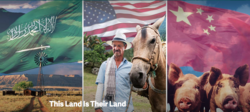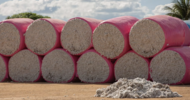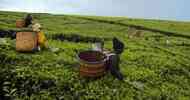by Araxia Abrahamian
In 2009, Madagascar’s ruling party struck a deal with Daewoo, a South Korean conglomerate, to lease half the island’s arable land. The foreign firm would get the land rent-free in exchange for $2 billion worth of infrastructure investments, and grow food for export without providing compensation for Malagasy farmers, who are very poor. The arrangement didn’t sit well with the country’s restless opposition—despite the promise of invesments that could spur domestic agricultural development—and when it got word of the deal, the opposition overthrew its rivals in a coup. Once in power, the new government promptly canceled the deal.
Madagascar was dealing with a particularly egregious land grab; it was indefensible from an economic and political standpoint. But in less obviously unfair cases, there is something existentially troubling, from the perspective of a country’s national sovereignty, about a company or government from another state owning large portions of its land. Even in an increasingly digital economy, land is what feeds, houses, and clothes us, and from an early age, we form emotional connections to places and spaces, to their feel and smell. Territory is fundamental to a nation. Water and soil are irreplaceable. So when rights to farm and develop land are sold off to foreign firms, it can bring about unrest and even regime change.
ADVERTISEMENT
The U.S. is not immune to these concerns: From the Homestead Act to Woody Guthrie, land ownership has been central to American national identity. But while some states block foreigners from owning farms, on the federal level it is legal for foreign interests to invest in American farmland, so long as they file the necessary disclosures with the USDA. That does not, however, prevent emotional responses when big deals are struck. Earlier this year, a Saudi Arabian firm bought 10,000 acres of Arizona farmland with no groundwater-pumping restrictions, giving it a supply of irrigation water limited only by the aquifer itself. The company’s plan is to grow alfalfa there and to export it back home to feed dairy cows. Locals were upset: Keith Murfield, the CEO of a cooperative, United Dairymen of Arizona (which buys a lot of alfalfa for its cows), told CNBC that the Saudis “have decided that it’s better to bring feed in rather than to empty their water reserves.”
When Shuanghui, a Chinese company with ties to the Communist government, took over the Virginia-based pork giant Smithfield for $7.1 billion in 2013, it wasn’t only buying pigs but farms too—$480 million worth. The transaction prompted congressional hearings—and a lot of retro hand-wringing about a Communist takeover.
These major deals are growing in number, but foreign investments in U.S. agricultural land make up a tiny proportion of overall land ownership—just 1 to 2 percent, or 26.7 million acres of forests and farms, according to USDA data from 2014. That’s an increase of about half a million acres over the previous year. The entities that own the most land aren’t faraway regimes with questionable politics but friends and neighbors: Canadians own a quarter of all foreign-held U.S. land (mainly timber in Maine), and the tiny Netherlands comes in at a close second, holding 18 percent (composed largely of timber, energy, and dairy investments).
On a global scale and among wealthy countries, the U.S. is one of the biggest players in the foreign farmland market, according to the Land Matrix, a nonprofit organization that tracks foreign land deals in low- and middle-income countries.
After Malaysian interests, Americans are the biggest investors in land outside their borders, with deals in dozens of countries totaling slightly more than 8 million acres. It’s worth noting that “private companies are the leading investor type, followed by stock exchange–listed companies and investment companies,” according to Land Matrix researchers Kerstin Nolte, Wytske Chamberlain, and Markus Giger, who responded to questions by email. “The key player is clearly the private sector, and not ‘foreign’ state-owned entities.”
The region with the biggest number of deals with American investors is South America, in part because there’s an established land market there and also because companies “invest in crops that are also grown in the U.S. and thus similar technologies can be applied, including [genetic modification] technologies,” the researchers said.
FARM OF THE FUTURE
BIG ISSUE vol. 13
Meet the farmers working to solve the problems of tomorrow, today.
Why Pastoralists Are Finally Settling Down
Why Pastoralists Are Finally Settling Down
The Beef With Feedlots
The Beef With Feedlots
The Future of the Future Farmers of America
The Future of the Future Farmers of America
See all 8 stories
Phil Corzine, a soy farmer from Illinois, is one of these investors. He decided to buy land in Brazil with some fellow farmers in 2004 because at the time, the economics made a lot of sense. “Brazil was really starting to increase production because of the weak currency, and costs were low,” he said. “Land was extremely cheap, so we were down there on a fact-finding mission, and I wanted to put together a company to take advantage.”
Initially, Corzine and his partners turned a good profit farming and selling his crop in Brazil, and the sudden jump in food prices in 2007 and 2008 worked to their advantage. But since then, as the Brazilian currency strengthened, it has become more difficult for the farmers to operate on their relatively modest budget of $1.5 million, which they used to buy and develop about 30,000 acres.
Add to that the political backlash against big foreign companies setting up shop in a country that’s the world’s fifth most invested in—foreigners hold almost 7 million acres in Brazil, according to the Land Matrix—and they had a problem. “Big companies can hedge, but on a small scale it’s difficult. We didn’t have any financial success down there,” Corzine said. “Prices [are] less than 50 percent of what they were initially; they just collapsed, so people really cooled off on investing.”
The trajectory of Corzine’s Brazil investment is emblematic of a broader trend in land deals. The record spike in global food prices in 2007 and ’08 was a motivator for companies, sovereign wealth funds, and investment firms to buy up and develop land abroad. Sovereign countries “were reminded of their food insecurity,” noted a 2010 report by the World Bank on the subject. “It wasn’t just prices going up—a lot of countries slapped on export bans” as well, according to Ruth Meinzen-Dick, a senior research fellow at the International Food Policy Research Institute and a member of the International Land Coalition, which started the Land Matrix.
(Photos: Todd Arbini/Getty Images; Tim Flach/Getty Images)
Countries in the Gulf, for instance, “didn’t want to [be] susceptible to not being able to get crops like rice, especially because they were moving away from their own production, which was generally unsustainable,” Meinzen-Dick said. And so abroad they went, and a “land rush” followed. China, for one, explicitly stated in a recent five-year plan that it would begin to invest abroad for the purposes of food security; cue headlines along the lines of “Food Is the New Oil.” Some years later, the desert nation of Saudi Arabia began phasing out domestic grain and forage production, which requires a lot of water, and the government is offering financial support to companies like the firm that bought land in Arizona to spur foreign farmland investment, in part to diversify its own oil-dependent economy. Other big investor countries, such as Singapore, Malaysia, and United Arab Emirates, sought food but also resources like palm oil and timber.
Meinzen-Dick said that a lot of the investments that were part of the boom were also motivated in part by a myth that there were acres upon acres of arable land out there, particularly in Africa. While there was good farmland to buy, developing many of the investments proved difficult without proper infrastructure—from rural roads to irrigation systems. Today, Meinzen-Dick said, investors are more skeptical, because not all of the deals made after 2008 worked out. “A lot of investors were overly optimistic about what they could do, and they assumed they could get much higher yield and productivity than in fact they were able to,” she noted.
As the global population rises, interest in food production from countries but also financial firms seeking to make a buck is unlikely to wane. Because of a lack of transparency and poor record keeping, only 30 percent of the world’s land ownership is accounted for, according to the World Bank, so the picture is still hazy. There’s no telling what will happen to farms that investors bought or leased but didn't end up developing. “The worrisome thing is cases where they took the land and never did anything,” said Meinzen-Dick. “So what happens to the land then?”
The Land Matrix researchers have been somewhat reassured that some deals are moving toward production—but with that come fresh challenges. “We do not see any reason for a decline in land acquisitions and believe the upwards trend will continue [with] increased demand for agricultural crops,” they wrote in the email, adding that as more land is put under production, “the impacts on the socioeconomic and ecological sphere are likely to increase.” The way these deals are structured, then, will be even more critical in the future: Investors must consider not only the local implications of their plans to grow food and seek sources of energy but also what their deals mean for the entire planet. You can only send your problems offs














